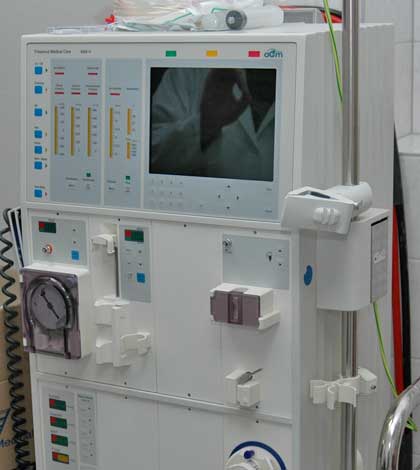WIKWEMIKONG—The Wikwemikong Nursing Home has become the first band organization to train its staff in the use of peritoneal dialysis, opening doors for people who would normally have to travel or move to Sudbury or another larger urban centre if they become too incapacitated to continue to operate the equipment at home.
“Some people, for health reasons, can’t continue to do it at home,” noted Kim Genereux, Noojmowin Teg Aging at Home navigator. “In the past, people would have to leave their community. This is really a big step forward and will help pave the way for other health organizations.”
“We have trained half our nursing staff today,” said Sarah Loven-Lacasse, director of care at the Wikwemikong Nursing Home. “We will be training two more and then we will have the ability.”
Ms. Loven-Lacasse pointed out that there is a very high incidence of diabetes in First Nations communities. “We can now take in patients that have the peritoneal dialysis equipment,” she said.
The two-day training course for registered nurses is the first step, with the RNs and RPNs at the nursing home gaining the training. Personal support workers can also receive the training.
Before dialysis, total kidney failure that can result from diabetes was an eventual death sentence. Dialysis is a way of cleaning the blood in your body when your kidneys are no longer up to the job. Dialysis gets rid of the body’s wastes, extra salt and water, and helps to control blood pressure. The other option is a kidney transplant, often not an option for older diabetics.
There are two kinds of dialysis. In hemodialysis, blood is pumped out of your body to an artificial kidney machine, and returned to your body by tubes that connect you to the machine. Health Science North conducts that type of dialysis at the Manitoulin Health Centre.
In peritoneal dialysis, the inside lining of your own belly acts as a natural filter. Wastes are removed by means of a cleansing fluid called dialysate, which is washed in and out of the belly in cycles.
In peritoneal dialysis, a soft plastic tube (catheter) is placed in the belly by surgery, then a sterile cleansing fluid is put into the belly through this catheter. After the filtering process is finished, the fluid leaves your body through the catheter.
There are two types of peritoneal dialysis, continuous ambulatory dialysis (CAPD) where the fluid is machine free, where two litres of cleansing fluid is pumped into the belly and later drained, and automated peritoneal dialysis (APD) which utilizes a machine.
In APD a machine called a cycler delivers and then drains the cleansing fluid. The treatment usually is done at night while the patient sleeps.
“We really want to thank Kim Genereaux, the aging at home navigator at Noojmowin Teg Health Centre, for her support,” said Ms. Loven-Lacasse. “I know she has worked tirelessly to help make this project happen.
That work involved numerous meetings with Health Sciences North Nepherology and the Wikwemikong Nursing Home. Without the trained staff at the Wikwemikong Nursing Home, members of the Wikwemikong (and greater Manitoulin Island) community would have no other real option than to move to a larger community like Sudbury.



